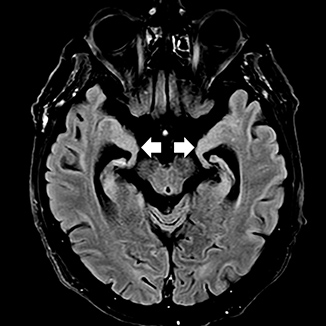Keywords
Stroke in the young, neurosyphilis, AIDS, HIV, syphilis, HCV
Abstract
Introduction: The differential diagnosis of stroke in a comparatively young adult should always include cardiovascular aetiologies as well as central nervous system infection.
Case Presentation: A 56-year-old man, with no significant medical history, presented with headache, nausea and vomiting, and right hemiparesis. Routine stroke investigation was initiated, while CNS infection was also sought. Diagnoses of HIV infection, neurosyphilis, HCV and HBV were established. Targeted therapy resulted in prompt clinical improvement.
Conclusion: This case highlights the importance of considering CNS infection as a cause of neurological deficits in parallel with other investigations in cases of stroke in a comparatively young adult.
References











